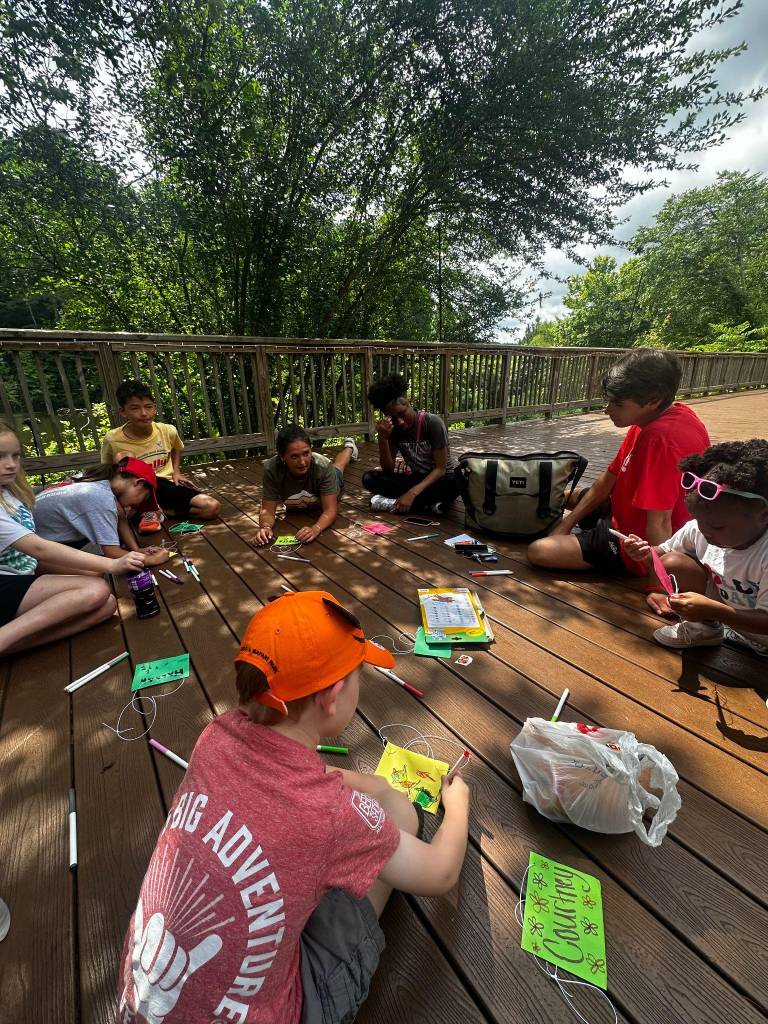Chas ’25 and Georgia ’25 spend the day helping kids connect to nature by teaching them about the connection between ecosystems’ biotic and abiotic components.
The Rally Foundation, which leads cancer research, has a community of children who face cancer or have defeated it in the past. With these kids, who are around ages 4-12, the organization creates fun events. I am super grateful that I had the chance to put one of these together.
When the seven kids showed up for our nature education camp at the Chattahoochee Nature Center, we were delightfully surprised by how outgoing they were. Each one went up to me and talked about their different interests.
Our first activity was creating name tags and eating pizza afterwards on the outdoor deck. I would say one of the funniest moments of the day happened here: one of the little girls, who was around four, started to act like a giant to the ants crawling around. She stomped around them, saying, “phee phi pho phum”.
After we ate, Georgia and I led everyone to the birds of prey rehabilitation center. Here, injured birds, such as bald eagles and barn owls, are kept to recover from injuries. The both of us made sure to do our research the night before on all the bird species at the center so we could tell facts about each of them. My favorite part of our lecture was teaching the kids about apex predators and how crucial they are for an ecosystem to thrive. I loved getting to watch the campers think about how nature only exists due to the hundreds of crucial relationships between its biotic and abiotic components.
Before heading up to a patch of grass to play games, such as the classic duck-duck-goose and red light green light, we all sat down on picnic tables to draw our favorite birds. To wrap up the day, we went on a nature walk around a lake. On the walk, we discussed everything related to nature- from beavers to ants to solar power.
My most memorable conversation was with one of the boys (around age 11) during pickup. He told me that he had never spent time appreciating nature and noticing how complicated every small aspect of it is. He said before the camp, he would just think of a tree as a tree, but now he can look at one in awe. This really made Georgia and I’s work worth it. Our mission in this project was to connect kids to the outdoors, and this conversation proved to me that we were successful.









